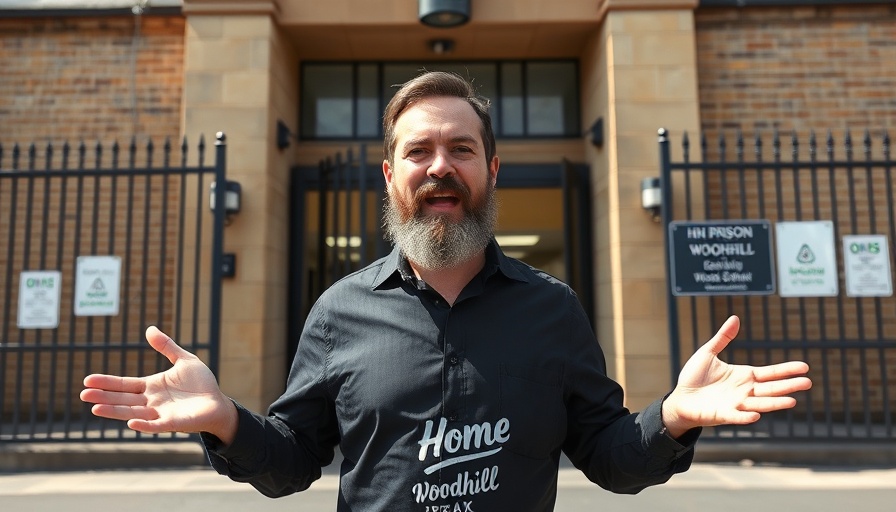
Tommy Robinson's Release: A Journey Through Solitary Confinement
Tommy Robinson's recent release from prison after spending seven months in solitary confinement has sparked significant interest and many questions surrounding his mental state and newfound symbolism of faith, as evidenced by the cross and rosary he wore upon his release. Having faced a similar experience of isolation in the past, it’s crucial to consider the psychological and spiritual implications of such confinement. Solitary confinement can lead to significant mental health challenges, and every individual's response to such situations can vary greatly.
In Did Tommy Robinson Become a Christian in Prison?, the discussion dives into the transformative power of faith during hardship, exploring key insights that sparked deeper analysis on our end.
The Psychological Toll of Isolation
Given my own encounters with solitary confinement, I empathize with the substantial psychological toll it takes on an individual. Studies have noted that lack of social interaction can diminish cognitive functions and alter behavior. Those who endure isolation often struggle to reintegrate into society, leading to heightened stress and anxiety levels after confinement. Robinson's previous experience in prison in 2018 saw him battling with symptoms that resembled PTSD, making it reasonable to anticipate a more extreme reaction after an extended duration alone.
However, upon his return this year, Robinson appeared to be relatively composed, which led to speculation surrounding how he managed his mental health during his isolation. Many suggest that the vast amount of mail he received during incarceration may have played a crucial role in maintaining his sanity, as it provided distinct social contact that could mitigate the effects of loneliness.
Faith as a Beacon in Darkness
Moreover, an essential aspect of Robinson’s story is the appearance of a cross around his neck, which raises deeper questions about personal faith and spiritual rebirth. Amid the harsh reality of being confined, could it be that his new-found embrace of Christianity was a source of strength? The leap from being considered an atheist or agnostic to identifying with Christianity is significant. This potential conversion during a time of immense personal struggle sheds light on the broader theme of spiritual awakenings that some believe are happening across Europe.
The Revival Phenomenon: Assessing the Evidence
Many observers are hoping for a revival in the UK, viewing it as a potential salvation from the moral and spiritual decline they perceive in society. This expectation is fueled by signs of shifting tides among the youth, with increasing numbers turning away from atheism and engaging more fully with spiritual practices. The relationship between Robinson's personal journey and the larger context of faith engagement could reshape discussions about the future of Christianity in Europe.
Connecting the Dots: Historical and Current Spiritual Movements
Historically, periods of societal strife have often preceded spiritual revivals. If Robinson's endeavor to assert free speech and his expression of newly-found faith resonate with a larger audience, one must ponder whether this could be an inflection point for many in similar circumstances. Acknowledging the struggles faced while also recognizing the potential for redemption is critical in understanding how narratives can shift towards hope.
The Bigger Picture: The Importance of Community and Support
Ultimately, Robinson's experience is a compelling testament to the importance and impact of community support during challenging times. The letters he received provided not just comfort but perhaps also a sense of belonging, which can be transformative during isolation. It emphasizes to all of us how essential it is to reach out to others who may be facing their own struggles, creating a supportive network that uplifts those in despair.
Conclusion: The Path Forward for Faith and Resilience
The implications of Robinson’s release and apparent faith transformation offer significant food for thought about the intertwined nature of mental health and spirituality in confinement scenarios. For believers, skeptics, and seekers alike, his resurgence could inspire discussions around resilience and the potential for renewed faith movements.
As we reflect on these events, consider how your community can support individuals undergoing their own struggles. If you’re inspired by Tommy Robinson’s journey towards faith and renewal, think about how you can create spaces for dialogue and support within your circles. Let’s foster an environment that nurtures hope and upliftment for everyone.
 Add Row
Add Row  Add
Add 








 Add Row
Add Row  Add
Add 

Write A Comment